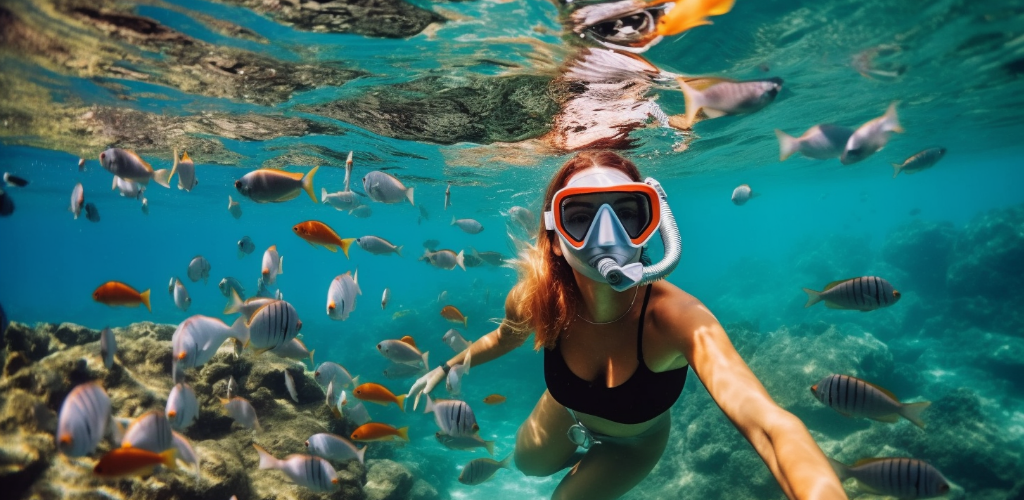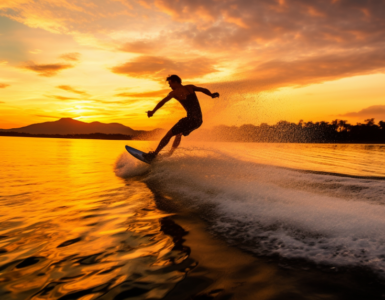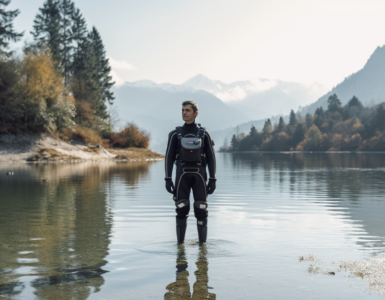Welcome to all water sports enthusiasts and those with an adventurous spirit! Snorkeling is a popular and exhilarating activity that offers the opportunity to explore the stunning beauty of the underwater world. This blog post is designed with beginners in mind, providing essential tips and tricks to enhance your snorkeling experience and ensure your safety. Ready to dive in?
The Importance of Choosing the Right Equipment
Starting with the right snorkeling gear is crucial for a successful and enjoyable experience. This includes the mask, the snorkel, and the fins. But what makes them suitable for beginners, you might ask?
The mask should provide a clear view underwater and fit comfortably without being too tight. The snorkel, which allows you to breathe while your face is submerged, should be of the right length and diameter. As for the fins, they should fit well and be easy to maneuver, assisting you in swimming efficiently underwater.
Demystifying How to Use Snorkeling Gear
Now that you’ve chosen your equipment, let’s talk about how to use it. Properly equipping yourself is essential to a smooth snorkeling experience. Ever wondered how to get that mask to sit just right?
To fit the mask, place it on your face, pull the strap back, and adjust until it feels snug but comfortable. The snorkel should be positioned on the left side of your face, attached securely to the mask strap. Fins should be worn snugly, not too tight or too loose, ensuring you can swim with ease. Remember, practice makes perfect!
Mastering the Art of Breathing Underwater
Ever wondered how it feels to breathe like a fish? Well, snorkeling is as close as you can get. However, it’s crucial to master the art of breathing underwater. Unlike normal breathing, snorkeling requires you to breathe through your mouth, not your nose. It might feel strange at first, but with a little practice, it will become second nature.
Remember to breathe slowly and deeply. It helps to keep you relaxed and conserve your energy. And don’t worry if you get a mouthful of water; it happens to everyone. Just blow gently into the snorkel to clear it. See, it’s not as hard as you thought, right?
Avoiding Panic Underwater
It’s absolutely normal to feel a bit anxious when you first start snorkeling. After all, it’s a whole new world down there! But the key is to remain calm and composed. Panic is one of the biggest threats to snorkelers.
So, what can you do to keep calm underwater? First, familiarize yourself with your equipment on land before you get in the water. Get comfortable with the feeling of the mask on your face and the snorkel in your mouth. Second, start in shallow water where you can touch the bottom. Lastly, remember that it’s okay to take breaks. If you feel uneasy, come up, float, and take some deep breaths.
Common Snorkeling Mistakes to Avoid
Now that you’ve got a handle on breathing and staying calm, let’s talk about some common snorkeling mistakes that beginners often make. But don’t worry, we’ve all been there, and these are easily avoidable with a bit of knowledge.
One common mistake is not checking your equipment properly. Always ensure your mask seals correctly, and your snorkel is securely attached. Another mistake is neglecting to defog your mask, which can lead to poor visibility underwater. Also, remember not to exhaust yourself. Snorkeling is about enjoying the experience, not racing to the finish line.
Preventing Equipment Malfunctions
Equipment malfunction can turn a fun snorkeling session into a stressful situation. But guess what? Most of these are preventable with a little care and attention.
For instance, always rinse your gear with fresh water after each use to prevent saltwater damage. Store it out of direct sunlight to avoid material degradation. And most importantly, check your equipment for any signs of wear and tear before every snorkeling session. Remember, safety first!
Avoiding Dangerous Marine Life
The underwater world is full of wonders, but it’s also home to some potentially dangerous creatures. While it’s rare to encounter hazardous marine life while snorkeling, it’s best to be prepared. After all, forewarned is forearmed, isn’t it?
Always maintain a safe distance from all marine life. Never touch or feed any creatures, no matter how harmless they appear. If you see something that looks dangerous, like a jellyfish or a stingray, move away slowly and calmly. And remember, the best way to stay safe is to be aware of your surroundings at all times.
Understanding Underwater Safety Precactions
Snorkeling is a thrilling experience, isn’t it? But as we immerse ourselves in the underwater world, safety should always be our top priority. Snorkeling safety precautions are key to ensuring that you have a fun and safe time exploring the depths.
One essential rule is to always swim within your limits. It’s easy to get carried away by the beauty of the underwater world, but remember, never venture further than you are comfortable with. The sea can be unpredictable, and it’s always better to err on the side of caution.
Another vital point is to avoid touching the underwater flora and fauna. Not only can this potentially harm the marine life, but some organisms can also pose a risk to you. Some creatures might not take kindly to being disturbed and could react defensively. So, remember, look but don’t touch!
Lastly, let’s not forget about respecting marine life. The ocean is their home, and we are merely visitors. Avoid chasing or harassing marine creatures. Instead, observe them from a distance and relish in the natural behavior they display when undisturbed.
Snorkeling Etiquette for Preserving Marine Ecosystems
We all want to keep exploring the magnificent marine ecosystems, don’t we? But to ensure they remain for future generations to enjoy, we must follow certain snorkeling etiquette.
Preserving the marine ecosystem is a responsibility we all share. Each time we go snorkeling, we can make a difference by following some simple rules. For instance, avoid standing on or breaking corals, as it can cause irreversible damage to the reef. Also, refrain from feeding the fish, as it can disrupt their natural feeding habits and can lead to dependence on humans. And of course, never leave any trash behind.
So, how can we contribute to conservation efforts while snorkeling? It’s simple – just follow the ‘Leave No Trace’ principle. Take only photos, leave only bubbles!
| Do’s | Don’ts |
|---|---|
| Swim calmly and avoid disturbing marine life | Don’t touch, chase or feed marine life |
| Stay within your comfort zone | Don’t venture too far or too deep |
| Use eco-friendly sunscreen | Don’t use sunscreen that contains harmful chemicals |
| Take your trash with you | Don’t leave any trash behind |
| Respect the marine environment | Don’t stand on or break corals |
Enhancing Your Snorkeling Experience
Who wouldn’t want to make the most of their underwater adventures? Snorkeling is a fantastic opportunity to discover the beauty of the underwater world, and there are several ways you can enhance your experience.
Firstly, finding the best snorkeling spots is key. There’s a whole world beneath the surface waiting to be explored, and each location offers a unique sight. Do some research in advance, ask locals, or join a local snorkeling group to discover the best spots.
Interacting with marine life can also be a fascinating experience. Remember, you are a guest in their habitat. Treat them with respect, keep a safe distance, and never touch or disturb them. Imagine the thrill of seeing a school of colorful fish, a graceful manta ray, or even a friendly sea turtle in their natural environment!
Lastly, capturing underwater photos and videos is an incredible way to share your experiences with others and keep memories alive. Investing in a good underwater camera and learning how to use it effectively can add a new dimension to your snorkeling adventures. Ready to dive into the deep blue?
Building Your Snorkeling Skills Over Time
Snorkeling is a skill, and like any other skill, it takes time and practice to improve. But don’t worry, it’s a journey, and every step is rewarding.
Taking snorkeling classes is a great way to start. Expert instructors can provide practical lessons and valuable tips to enhance your skills. They can help you understand the dos and don’ts, safety guidelines, and underwater etiquette in a structured manner.
Practicing regularly can also boost your confidence and skills. Start in shallow, calm waters before gradually moving to deeper or more challenging environments. Remember, patience is key when learning to snorkel.
Exploring new areas not only adds variety to your snorkeling adventures but also helps you adapt to different underwater conditions. This experience can be invaluable in enhancing your overall skills and confidence. Curious to know where your snorkeling adventure will take you next?
- The Complete Idiot’s Guide to Snorkeling – A comprehensive book for beginners.
- PADI Skin Diver Course – A course for beginners who want to learn snorkeling from professionals.
- Scuba Diving and Snorkeling For Dummies – A handy guide for anyone interested in underwater adventures.
- Snorkeling Online Blogs – Blogs like Tropical Snorkeling and Snorkeling Report provide a wealth of information.
Concluding Thoughts
Snorkeling is a delightful journey into the underwater world, filled with awe-inspiring sights and thrilling experiences. The tips and tricks shared in this blog post aim to enhance your snorkeling adventures and ensure your safety.
Remember, every proficient snorkeler started as a beginner, and with patience, practice, and the right resources, you too can master this wonderful water sport. So why wait? Grab your snorkel gear, take the plunge, and let the adventures begin!
Happy snorkeling!




